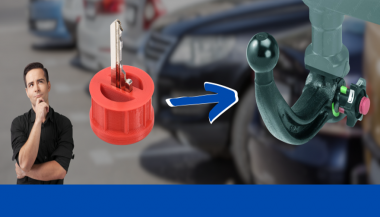You’ve got a spare car key in your hand and one big question on your mind: can you program it yourself, or should you visit a locksmith or dealer? The answer depends on your car and the key. In this guide, you'll discover when DIY programming is possible, when it's not, and how to avoid common mistakes. Whether you're aiming to save money or just want a backup key for peace of mind, here's everything you need to know.
Types of Car Keys: What You’re Working With
Not all car keys are the same—and that matters. Older vehicles often use simple metal keys or basic transponder keys, while modern cars rely on electronic fobs and smart keys with encrypted chips. If your car was built before the early 2000s, there’s a good chance you can program a spare yourself without any special tools. Newer vehicles, however, might require dealer-level software or diagnostic equipment to complete the job.
Basic key types include:
Non-transponder metal keys: can be copied at any key-cutting service.
Transponder keys: contain a chip that communicates with your car’s immobilizer.
Remote key fobs: combine keyless entry with a transponder chip.
Smart/proximity keys: high-tech, often require dealer programming.
How DIY Key Programming Works
If your car supports on-board programming, you're in luck. Here’s how a common DIY method looks:
Insert your original (master) key into the ignition and turn it to “on” (don’t start the engine).
Leave it for five seconds, then remove it.
Quickly insert the new spare key and turn it to “on.”
Wait for the security light to blink or turn off—this confirms successful programming.
Test the spare key by starting the engine.
Note: This process varies by vehicle. Always consult your owner's manual or search for your specific make, model, and year online before starting.
When You’ll Need a Professional
DIY isn’t always an option. If your car uses advanced keyless systems, push-button start, or encrypted communication, programming usually requires access to manufacturer software and security codes. In these cases, a qualified locksmith or dealership is your best (and safest) bet.
Also, if your vehicle requires a unique PIN to program a new key—and you don’t have it—don’t guess. Incorrect attempts could lock the system and result in costly reprogramming.
Choosing the Right Spare Key
Buying the correct spare key is critical for success. You’ll need:
The correct transponder chip type (e.g., ID46, ID48, PCF7946)
Matching blade shape or key profile
The correct frequency (commonly 433MHz or 868MHz)
Avoid cheap generic blanks unless you're certain they’re compatible. Poor-quality keys may not accept programming or may fail shortly after.
Quick DIY Checklist: Are You Ready?
You already have a working master key
Your vehicle supports on-board key programming
The spare matches in chip, frequency, and blade
You’re comfortable following time-sensitive steps
You’re okay calling a pro if things don’t work
If you checked most of those, DIY might be a great fit. If not, you’re better off with professional help—it could save you time, frustration, and possibly money in the long run.
Be Smart with Your Spare Key
Having a backup key is more than convenient—it’s essential. From lost keys to unexpected lockouts, a properly programmed spare key can save the day. If your vehicle allows DIY programming, take your time, follow instructions carefully, and double-check compatibility. If you hit a wall, don’t force it. Pros are there for a reason.
No matter which route you take, you’ll thank yourself later for being prepared. Because when it comes to your car keys, one really isn’t enough.

_1743422904.jpg)

_1742219234.jpg)

 (1)_1736339630.jpg)